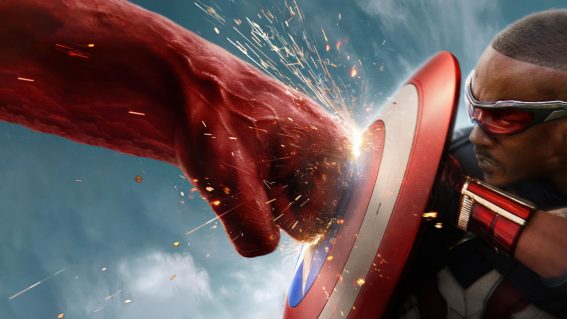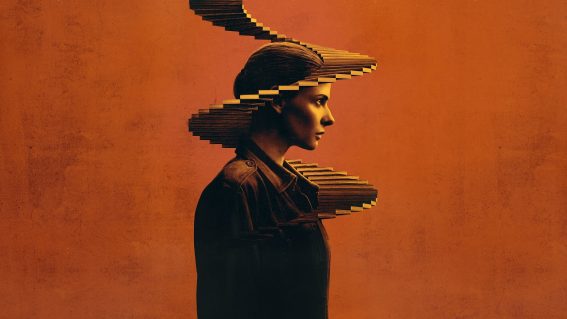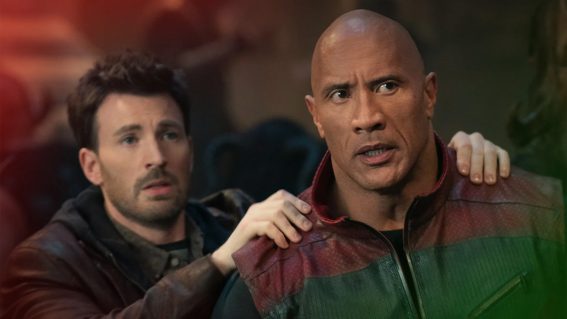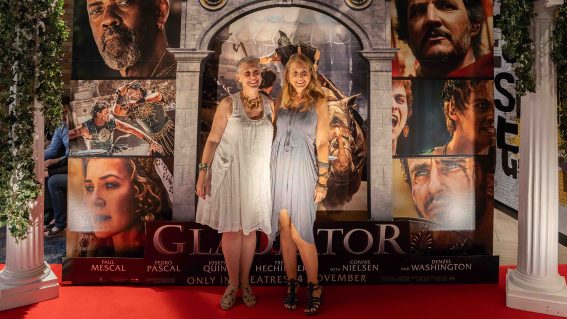3D: The Technology, History and Debate

The three dimensional revolution is here! Anyone doubting its power to immerse an audience had their trap shut with James Cameron’s Avatar – designed from conception as a complete 3D experience. Since it became the highest grossing film of all time cinemas have been swamped in 3D features, some more successful than others. Rest assured, 3D is well and truly here. Expect it en masse in your cinema and, soon, in your living room.
The Technology
Gone are the days where we donned red and blue glasses to watch something black and white leap out at us.
We’re entering a new era of storytelling. The technology has improved immensely and the results, when done well, are jaw-dropping.

SHOOTING THE MOVIE
First, some complicated stuff. To make your 3D movie, you’re going to need two cameras. It’s much like your own eyesight – you’ve got two eyeballs, each recording visual information, and it’s the distance between them that allows your brain to perceive depth. Walk around with an eye patch and you’ll be bumping into stuff and struggling to catch a ball.
The distance between your two eyeballs is about 65mm. This distance is referred to as ‘interocular distance’, or IO. So a 3D camera setup replicates this, placing two cameras the same distance apart using a nifty mirror system.
And, just like if your eyes were closer together, a smaller IO distance would result in a lesser 3D effect, whereas a wider distance would increase it. This can’t be changed later on, so be extra careful when deciding on your IO value for each shot.
These cameras also also angle their lenses. If you draw your focus to an object close to your face, your pupils start to angle in (the extreme of which is when you go cross-eyed). Conversley if you focus on something in the distance, your pupils point straight out. So to further mimmick how we see, the two cameras of a 3D camera will angle in on a foreground object.
Can a movie captured by a single camera become three-dimensional? The simple answer is: it can’t. Well, not effectively anyway. You can’t achieve genuine results without using the two-camera method.
There are, however, plenty of 2D films being converted into 3D in post-production –Clash of the Titans and Alice in Wonderland are examples – and the results are often dubious (see below for the views of James Cameron on this).
SCREENING THE MOVIE
You’ve shot your 3D movie, now what?
Two copies of the movie are projected onto the screen. One copy is from the perspective of the left eye, while the other is from the perspective of the right eye.
The left and right images have different light polarisations. The left lens of your 3D glasses allows the light from the left projection to enter the left eye, but prevents light from the right projection. The right lens of the glasses does the opposite (you can test this out by wearing a pair of 3D glasses in front of a mirror. Close one eye, and you will see the opposite lens blackened out).
Your brain then combines the two images to create a single image with depth and the 3D effect. Booyah.
The History of 3D
Attempts at glittering up the cinema experience are many and varied – such as the introduction of wide screen cinemas in the 1950s or the failed Smell-O-Vision process – and all in the name or trying to lure more punters through the cinema doors.
3D is nearly as old as film itself (in Ye Old England, a 3D film patent was filed as far back as 1890 by a Brit named Friese-Greene). While 3D has always used the same methodology as today’s technology, picture clarity and camera/projection equipment began as a crude beast and the innovation’s popularity has come in waves.
THE 50s…
The first colour 3D film came from Hollywood in 1952 – Bwana Devil. This, along with the release of Man in the Dark and House of Wax a year later, were massive box office successes. This was a clear signal to the studios that 3D held the potential to draw people into the theatre and away from the movie business’ arch-nemesis: television.
Within a few years all of Hollywood’s major studios – from Warner Bros to Disney to RKO – were releasing in 3D. This period in the early ’50s is known as the ‘Golden Era’ by aficionados and spawned over 50 3D features, often with fantastic titles likeIt Came From Outer Space (1953), Robot Monster (1953), Taza Son Of Cochise(1954), Phantom of the Rue Morgue (1954), Cat-Women of the Moon (1953) andRevenge of the Creature (1955).
There were plenty of respected directors who embraced the medium too. Take Hitchcock’s Dial M for Murder (1954), John Farrow directed John Wayne in 3D western Hondo (1953), Dean Martin and Jerry Lewis starred in Money from Home(1953). Even Russian auteur Sergei Eisenstein loved 3D. In 1949 he made the bold claim: “For centuries, mankind has been moving towards stereoscopic (3D) cinema.”
While many of the 3D films were financially successful, the technology was clunky and the format fell from favour. Complications in projection requirements made life difficult for cinemas and 3D was usurped by the industry’s other bright idea of the time – widescreen (also designed to differentiate film from TV). CinemaScope and its widescreen cousins proved just as appealing to the public but came without the technical difficulties and image quality issues.

THE 60s – 90s…
Sporadic use of the medium in the second half of the Twentieth Century was usually tacky and disappointing. Not many people have kind things to say about 1983’sJaws 3-D, despite it making $US 88 million dollars worldwide. One of the most profitable films ever (in relative terms) is softcore sex comedy The Stewardess. Released in 3D in 1970, it cost $US 100,000 to make and made $US 27million in the States. Another notable release around this time was Andy Warhol’s Frankenstein (1973).
In the 1980s it was IMAX who started to get the 3D ball rolling once again by bringing some technical precision to the process. Theme parks used 3D films as permanent features – most famously Captain Eo by Francis Ford Coppola and starring Michael Jackson which first appeared at Disneyland in 1986. While the wow-factor of 3D was always improving, nothing caught the mainstream’s imagination.
2000 >
Robert Zemeckis’ The Polar Express (2004) was IMAX’s first full-length 3D feature. It was released in 2D on 3,500 screening in America but earned 25% of its total gross from only 66 3D screens. Ka-ching, thought the money men.
By now, the technological advances were enough to impress the world’s major filmmakers and one man in particular: James Cameron. Which brings us to present day, where Avatar is now the most successful film of all time (which, just quietly, is pretty much due to ticket prices for 3D films being more expensive than regular ones). The careful and considered use of stereoscopic technology in that film was enough to convince Hollywood bosses that money was in it again, and they’ve jumped aboard the bandwagon, trying to convert whatever they can into three dimensions.
There are 3D releases scheduled for release from all the studios – including Steven Spielberg and Peter Jackon’s Tintin movies and Martin Scorsese’s The Invention of Hugo Cabret.
The Debate
The popularity of 3D has come and gone more than once (see the history page). Has Avatar spawned just another short-term fad or is 3D the real future of movie going?
3D CONVERSION
First let’s deal with ‘conversion’ – the process in which films shot in 2D are converted to 3D in post-production. The hasty Clash of the Titans conversion has been criticised by many, including Dreamworks CEO Jeffrey Katzenberg, who recently told Variety that such conversions “snookered” audiences, jeopardising 3D’s long-term growth.
James Cameron is equally concerned: “After Toy Story,” he says, “there were 10 really bad CG movies because everybody thought the success of that film was CG and not great characters that were beautifully designed and heartwarming. Now, you’ve got people quickly converting movies from 2D to 3D, which is not what we did. They’re expecting the same result, when in fact they will probably work against the adoption of 3D because they’ll be putting out an inferior product.”
Transformers director Michael Bay is another big name who isn’t aboard the 3D conversion train. “I shoot complicated stuff, I put real elements into action scenes and honestly, I am not sold right now on the conversion process” said Bay.
“It’s always going to be inferior to shooting in real 3D. Studios might be willing to sacrifice the look and use the gimmick to make $3 more a ticket, but I’m not. Avatar took four years. You can’t just shit out a 3D movie. I’m saying, the jury is still out.”

FAD? OR THE FUTURE?
At the moment, it’s the animated films that are succeeding with the added dimension (and you can count Avatar among them). The relative ease with which you can set up a second virtual camera in the digital realm is a huge help. See How to Train Your Dragon, or Cloudy With A Chance of Meatballs for excellent examples of this.
Live action, however, is still an area of experimentation. Soon after Martin Scorsese announced that his next film would shoot in 3D, famed German arthouse director Werner Herzog announced that he will shoot a 3D documentary.
Despite his adoption of 3D for the project, however, Herzog is not a blind convert to the new technology.
“3D will always have one major problem,” he says, “and that is when you look as a human being, normally only one eye looks dominantly at things. The other eye is mostly ignored. And only in specific cases – if somebody approaches you – all of a sudden the brain starts to use both eyes for establishing depth of field and understanding space.
“But it tires you when you are a spectator at a 3D movie, because you are forced to see with two eyes and two images superimposed. So 3D, in my opinion, will only work for the big firework events like Avatar.”
Peter Jackson told us in December that the main concern with 3D projection was achieving suitable light levels, to maintain contrast and stop the muddiness. One of the downfalls of wearing the special glasses in the cinema is that a slight loss of brightness results. Try it yourself next time you’re watching a 3D flick – take the glasses off and you’ll notice that the colours are more vibrant.
Even Hollywood has its detractors. Wally Pfister, cinematographer for The Dark Knight and upcoming blockbuster Inception, reckons it’s a fad. He told Cinematical: “it’s great for like amusement park rides like the Honey I Shrunk The Kids ride at Disneyland.” He said that 3D is not realistic and “it’s a distraction. Can you imagine Memento in 3D? With Joey Pantoliano’s glasses sticking out ‘a few feet’ with his hair all the way back there?”
Film critic Roger Ebert (who never met a movie he couldn’t give the benefit of the doubt) has nothing kind to say about the 3D craze. In a recent Newsweek article,Why I Hate 3D (And You Should Too), he claimed it was a “waste of a dimension” and that it was “distracting”. He said: “Our minds use the principle of perspective to provide the third dimension. Adding one artificially can make the illusion less convincing.”
At Flicks HQ, we’ve seen the good and the bad, and so remain on the fence. Whether the 3D bonanza will live on or will fizzle out only to spend another few decades in relative obscurity, will depend on the product.
Comments:
THE FOLLOWING ARE COMMENTS POSTED IN RESPONSE TO THIS ARTICLE WHEN ORIGINALLY PUBLISHED.
“I am a fan of 3d bluray.I have no issue with the glasses. Went looking for The Green Hornet tonight at Video Ezy. Pity the stores don’t rent it. Looks like for the most part I need to purchace 3d bluray material instead of hire. Tron in the same boat. Not sure why find these titles are only available for purchace.Everyone needs to get with the programme and be positive about a fun new thing of high quality digital 3d. Not like the old stuff. Eg Gorilla at Large.” -By Chris
” “3d is a gimmick” etc yeah right, it will catch on this time becuase the new TV sets can display great picture quality in 3d. Will make certain types of movies (horror and sci-fi come to mind) way more engaging. Facehuggers in aliens would freaky shhh” -By Dave
“Kids, read no further. I won’t use any inappropriate language, but I will be using the term “kids” in a way which the brighter sparks amongst you may deem derogatory. Apologies for any offence since, if you are capable of registering the offence, you are clearly bright enough to fall OUTSIDE of the intended definition used forthwith. Unless you liked Clash of the Titans – irrespective of age, this makes you one of these Kids I’m talking about.
Kids today – you know, those little people who still go to school and don’t have jobs or responsibilities or much life experience or really any refined sense of bloody taste whatsoever? – are the juiciest market for Hollywood. Hollywood is the only serious contender in the 3D production stakes. Now that post financial-crisis corporate Hollywood has finally met a recession it didn’t like, it’s time to do them some gouging to keep up the cashflow they’ve become acustomed to… what can we do to draw these lil’ ADHD-piggybanks back into theatres when they could just as easily stay home and google “Jihad decapitation” for cheap thrills? Or download our last production for free from some file-sharing torrent?
Hmm. How about dusting off a hokey novelty format which audiences got bored with SIXTY YEARS AGO?
After all. How many kids today can name a movie from sixty years ago? Maybe one in ten? Because “old movies” are crap and boring, these TV/Internet-immersion-era tykes and tweens and teens (and plenty of narrow-minded adults, too) will probably say. They’d probably screw up their noses at ANY film from that era just because it’s “old” (and they’re not, so these things scare and confuse them, the poor dears). It comes down to this: because new movies (regardless of actual quality) are all they know, they believe “old movies are cheesey and lame.”
Does nobody else smell the irony here? These same pint-sized ignoramae are now queuing up en masse to see 3D movies, not for the movie, but for the 3D, because it’s all new and shiny to them – and they’re being fleeced for twenty or thirty times the price at the box office today than their grandparents were back when they decided they’d give a 3D movie a go for the hell of it.
Kids – those people with no taste, and nothing better to spend their disposable income on (this generation still have more than any before them, recession or not) – will get a fair selection of movies to see in 3D. Because they keep PAYING to see it, even when it’s crap. Because, they don’t “get” things like CHARACTER or STORY except in the broadest (read: most obvious) sense possible (they can’t, it takes years of movie-watching before you’re capable of movie-reading beyond the literal level). Hollywood loves this. Not only do they not have to invent any new stories (which, arguably, they’ve already given up on anyway), but by blatantly sucking in the wee punters with nothing more than gimmicky spectacle, they also get to simultaneously LOWER THE BAR for this audience’s future expectations of what a film can be. Like Big Tobacco: hook em when they’re young and dumb, they’ll be a compliant customer for life.
This is a major problem for those of us who don’t give a toss about 3D. I don’t DISLIKE it – I just think it’s pointless – we could use SIX dimensions and I bet Avatar would still be a cliched bore and Sam Worthington (why is this guy famous again?) would still be a crap actor. And I think the fact that cinemas are switching to 3D facilitation with haste and at tremendous cost – lest they fall behind their competitors – is going to become an even bigger problem.
Once you spend $XX0,000 upgrading your cinema facility, you have to justify that expense. Meaning, you need to use that facility. Meaning, it’s no longer just a good idea for cinemas to offer the possibility of 3D, IT’S MANDATORY THEY SCREEN 3D FILMS RATHER THAN 2D FILMS.
Meaning, 3D films will quickly absorb a greater marketshare than the varying quality of the product really warrants – at least, so far as people who want to go to the cinema to see ANYTHING other than Tron: Legacy, Megamind, or Harry Potter Part 23.6 would discren “quality”. I didn’t pick those films out of the hat, by the way: they were the only things on general release at Wellington’s majestic cinema palace the Embassy over the past few weeks. The Embassy has only unveiled it’s 3D capabilities two months ago, and already they’re ALL 3D, ALL THE TIME.
What? Did someone say Animal Kingdom? I Am Love? The Secret in their Eyes? A Prophet? An Education? Or any of the other worthy “crossover” movies (festival to mainstream success) of the past year(s)? I did. Some of these films screened at the Embassy during the festival. Some of them were so good – and even many “normal” non-cinephilic folks agree with me on this – that we would have paid to see them there again. But there’s no room on the schedule for anything even remotely outside the dead-centre mainstream – they can’t risk losing that audience of tasteless idiots with all the money, especially not after the cost of upgrading!
This has always been an issue: the bigger the movie, the bigger it’s likely audience (that’s why they bother risking a hundred million bucks on some of these things, rather than invest the same amount in a bunch of smaller projects), even if for no better reason than they get a bigger advertising budget. Smaller movies have a smaller chance at the box office, sad fact of modern commerce. But now, with 3D demanding full commitment from exhibitors’, the Little Indie That Could is in greater peril than ever of being muscled out of any mainstream release whatsoever.
This is my major gripe with 3D: that everybody LISTENED this time when some marketing exec declared to it be “the future of movies!”, just like executives probably said back in the ’50s. As a result, the cinema is becoming less a Place to See The Light than… Look, I don’t know.
Artforms evolve and change. It happens. Maybe conventional 2D storytelling is bound for extinction by commercial circumstance – unlikely right now perhaps, but who knows what the next new and shiny “revolution” in multi-media entertainment might yield? And how much they’ll charge per ticket? And whether Sam Worthington will finally win an oscar for his work in it?
I only ask as a rhetorical question: I’m not really interested. I love cinema, and what I love about cinema is not in any way enhanced by 3D – yet 3D now has more money behind it, so the cinema is being bent over and told to take it. Because Kids Today have too much money and not enough sense.
For the record, Toy Story 3, Cloudy With a Chance of Meatballs, Up, and Coraline are all AWESOME movies. And I didn’t need to see them in 3D to say that. They were awesome because they were well-written, wonderfully-imagined stories full of interesting, entertaining characters. Period. SO WHAT IS 3D FOR? REALLY?
Because, in case nobody mentioned it… 3D DOESN’T ACTUALLY LOOK THAT GOOD. Just like nobody mentions that, if we’re honest, 80% of the CGI we get in movies today doesn’t look that good. It’s…kinda cheesey and lame. If we’re honest.
Stop downloading good stuff for free and then PAYING to see crap. You’re ONLY ENCOURAGING THEM TO MAKE MORE!” -By james h.
“Ultimately, it is going to depend on the films themselves as to how successful 3D becomes. From what I’ve seen, the best ones have been animated – “How to Train Your Dragon” was excellent, but it was also an excellent story, well crafted on every level. I refused to see “Clash of the Titans” in 3D because I knew it to be a conversion. Converting, say, “Toy Story” would be a different situation, since it is a digital creation to begin with. Creating the appropriate perspective to attain 3D digitally is a lot easier and a lot more accurate than attempting to do it with live action.
Some films cry out for 3D – the “wow” factor of “Avatar”, for example. But why the hell would you bother watching an indie kitchen sink drama in 3D? However a movie is shot, it’s the story and characters that come first. “Jurassic Park” would have been great in 3D, but I still loved it in 2D.
Will it survive? Only time will tell. Studios, greedy for money, will probably kill it before it has a chance to evolve and find its own niche. I remember looking at pictures through my grandmother’s stereoscope, including pix of miners in the Waihi mine shafts and they were superb. The details of the miners and their surroundings rendered them “real”. They stared back at me from a distant time; I almost expected to hear them speak. I could see flecks of dirt and grime on their boots and clothes, lamps against timbered supports seemed to be somehow more precariously balanced than they would appear in 2D. So 3D gave the sense of immediacy to history.
I saw “The Creature from the Black Lagoon” in 3D – red and green glasses, monochrome film – and that was also excellent, especially the underwater sequences. And again, it was also a good story, one of the better B-grade monster movies of the fifties.
But later, there was the god-awful “Coming At Ya” which pretty much killed the medium in one stroke.
Personally, I like to see 3D making a comeback. The technology has improved, it’s up to the film makers not to screw it up. Or the Suits who hold the purse strings.” -By RexH
“The real reason 3D is being pushed these days is because of internet piracy and illegal downloading, and because of the recent recession. Studios want you to pay more money to see a 3D film, that much is obvious. But they also want you to not download their material. Its like a watermark for film.
Studios should give the audience a better choice in how and when they want to see a film.” -By Eugene
“At this stage I defiantly think that 3D is a gimmick!
What we have seen recently is a huge downfall in good, original and exciting story’s being told in 3D.
Selling a movie based on the fact it is 3D as apposed to the fact it has a solid narrative, some great characters and performances that sell the story to you.
As if we are considering Clash of the Titans, Alice in Wonderland or Street Dance 3D to be any good, In my opinion even Avatar was very weak. It seemed every bit of time was invested into the aesthetics and not the characters or things that sell the story to people with interest in narrative and not just spectacle. To be honest the best example of 3D in a movie I have seen is My Bloody Valentine 3D, based on the fact that it knew it was using the 3D to ‘break through the screen’, that’s why I and a few people I asked went to 3D movies in the first place. To have things jump out of the screen ‘into the audience’…
Overall, will 3D stay? Sure, the amount cinemas have invested in going 3D will insure a few years of product. Will it get any better? I sure hope so, but in reality, are films getting any better in 2D anyway? Look at Transformers 2… If they can make more money making rubbish like that anyway, why not double the gross by selling it in 3D?
Right now though, 3D is defiantly coming in, but soon it will be going out! As it has done about 10 times in the past.
You will see.” -By James W
“If it is true 3d then the viewing aspect of the object should change when I look at it from a different point in space. This does not happen with stereoscopic vision which they pass off as 3D.” -By Simon
“Simon, you moron, you don’t need them. But you do if you want a flat movie screen to be in 3D.
I think it’s a gimmick – sure, cinemas are spending up large, but does the industry really know? They could be wrong… I think it’ll last a while but it won’t certainly won’t replace 2D films.” -By Nikki
“If the world is in 3D why then dont I need special glasses to see it?” -By Simon
“Yes Avatar was mind blowing in Digital 3D, Yes Clash Of The Titians was average in comparison ( as it was converted to Digital 3D instead of Filmed )
But Digital 3D is not a gimmick, it’s going to stay ! and for a long time !
Movie theaters world wide are pumping millions into rebuilding their cinemas for Digital 3D ( do you think they would spend the money if it was a gimmick ?)
If someone gets headaches or sore eyes from Digital 3D then go get your eyes checked ! You have eye issues, trust me you do. If you don’t think so, then you need to wake up and think – Why am I having headaches or sore eyes when millions and millions of other people watching Digital 3D movies are not ?
3D Tv – Well thats in the very early stages at the moment, you are talking about sets that are expensive ( especially buying $150+ pair of glasses per person in your house, Oh don’t for get you need a stack of batteries as they need to be replaced a lot ! )
There is like 2 Movies that are 3D on Blue-ray at the moment, in saying this over the next year or two this will change. Sky TV don’t have 3D, they took years to get HD !
But still why pay $1,000’s for a Digital 3D Tv, Digital 3D Blue-Ray Player, 3D Glasses, then the stupid cost of a 3D Blue-ray disc! When you could probably watch Digital 3D Movies at a cinema twice a week every week for the next 5+ Years at the same cost.” -By James
“I have to say I hated watching Avatar in 3D. I had reservations about watching it in 3D but by the time I got round to it, it was only screening in 3D. I remember going to the Imax Theatre at one of London’s Science Museum and that experience left me feeling nauseas. I will never watch another 3D movie again.” -By Samina Farrell
“they are right about the 3D conversion’s ruining the brand. i didn’t know clash of the titans was done in this way and it was definetly inferior. after that i thought 3d is average – but cast your mind back to avatar, that was mind blowing.” -By Joanna K
“A rather expensive gimmick. If you really want a 3D experience, go for a walk or see a play. If 3D is the way of the future, expect more illegal downloads. Who can be fudged going to the cinema and paying extra money to wear eye-hurting glasses? A good story is what makes a movie truly immersive. Next thing you know they’ll bring back “smell-o-vision”.” -By Eugene
“The glasses are the problem. Annoying and ridiculous, I don’t want to wear glasses. 3D without the glasses – then you’ll impress me.” -By aleana
“I really didn’t get on with the glasses and couldn’t understand what everyone was raving about for Avatar. I honestly only had 1 or 2 “Wow” moments whilst watching it. Maybe its because I already wear glasses? At this stage I’m really not fussed about seeing films in 3D and don’t think its worth paying the extra.” -By Sneeze
“It’s a tricky one isn’t it. Doubt I’d go buy a TV – would seem like a toy, not an appliance I’d use regularly. Especially not yet – no 3D movies to buy.” -By Sarah McDonogh
“Lest we forget, Avatar 3d was AWESOME!” -By Tin Man
“It’s a gimmick – just like it was in the past. Ultimately it’s a distraction and is not a BETTER way to watch movies. Why have 3D books or pictures not taken the world by storm? For spectacles – like Avatar – yes. But it’s not going to take over the movies.” -By TIG
“I get headaches!” -By Buck
“Not worth the extra money I reckon.” -By Dave









